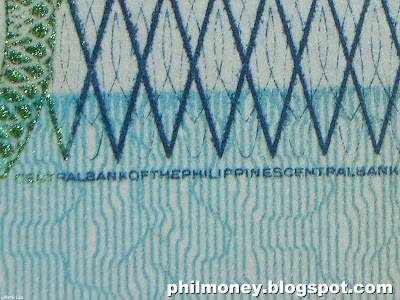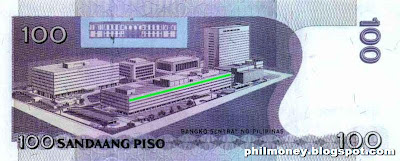Let me share a few secrets. Current Philippine banknotes conceal a trivial security feature. Microprinting on the 1000, 500, 200, 100,and 50 peso banknotes may at first seem like any of the many criss-crossing lines, but upon closer examination, they reveal words.
Microprinting is extremely difficult to accomplish in printing presses and other printing methods readily available to the public. Thus, the very small text in micrprinting are good indicators that a banknote is genuine.
The 1000 peso bill repeats: "Central Bank of the Philippines." Part of the text is even printed with optically variable ink (OVI).

The 500 peso bill also repeats: "Central Bank of the Philippines."

The 200 peso bill repeats in two different parts of the note: "Bangko Sentral ng Pilipinas."
The 100 peso bill repeats: "Bangko Sentral ng Pilipinas."
The 50 peso bill repeats: "Gusali ng Pambansang Museo" 
Can you guess where these microprints are located? I asked my friends and they had the hardest time looking for these words in the banknotes they handle everyday.
UPDATE: If you give up in looking for the microprints, I have indicated their exact locations in
this post.
























